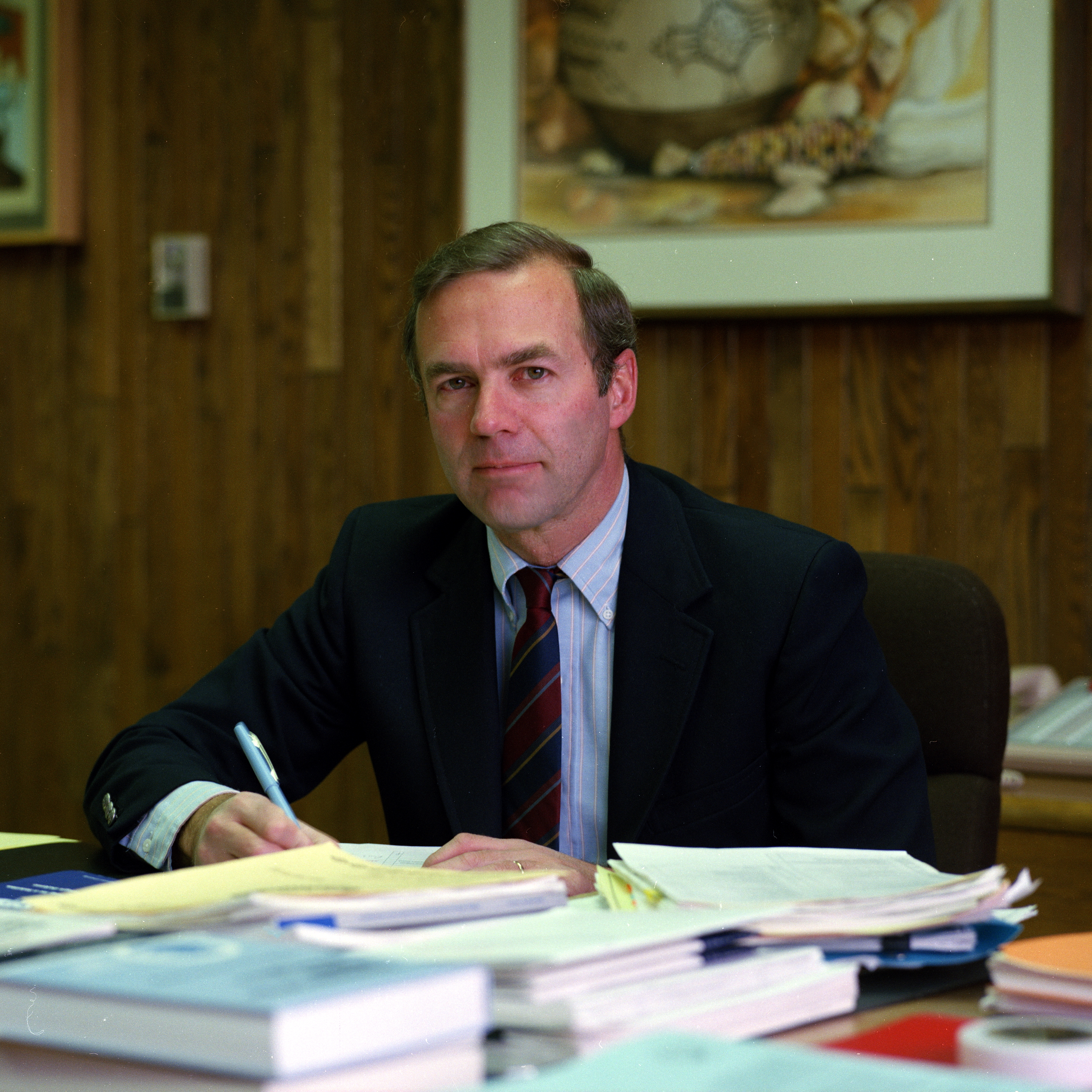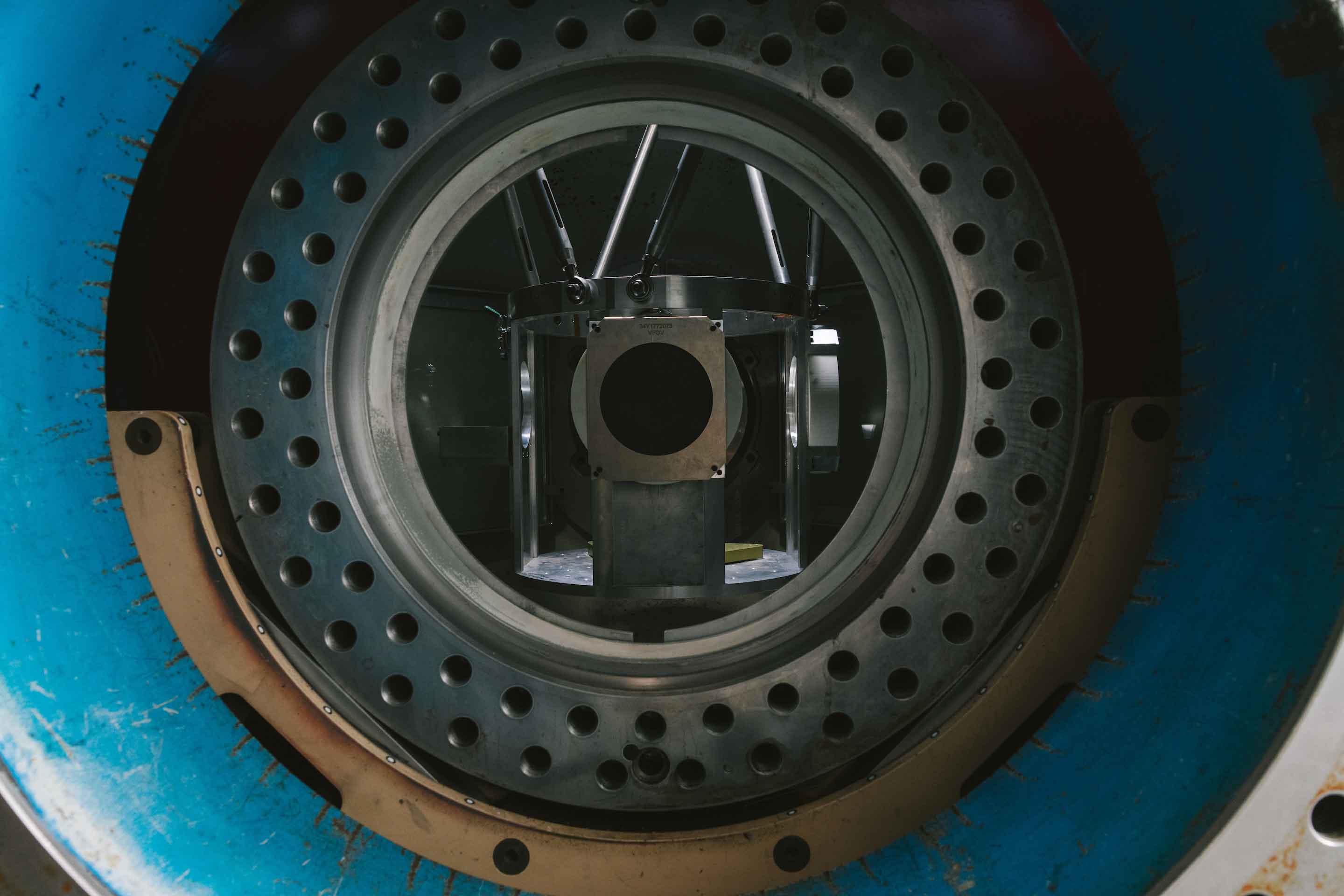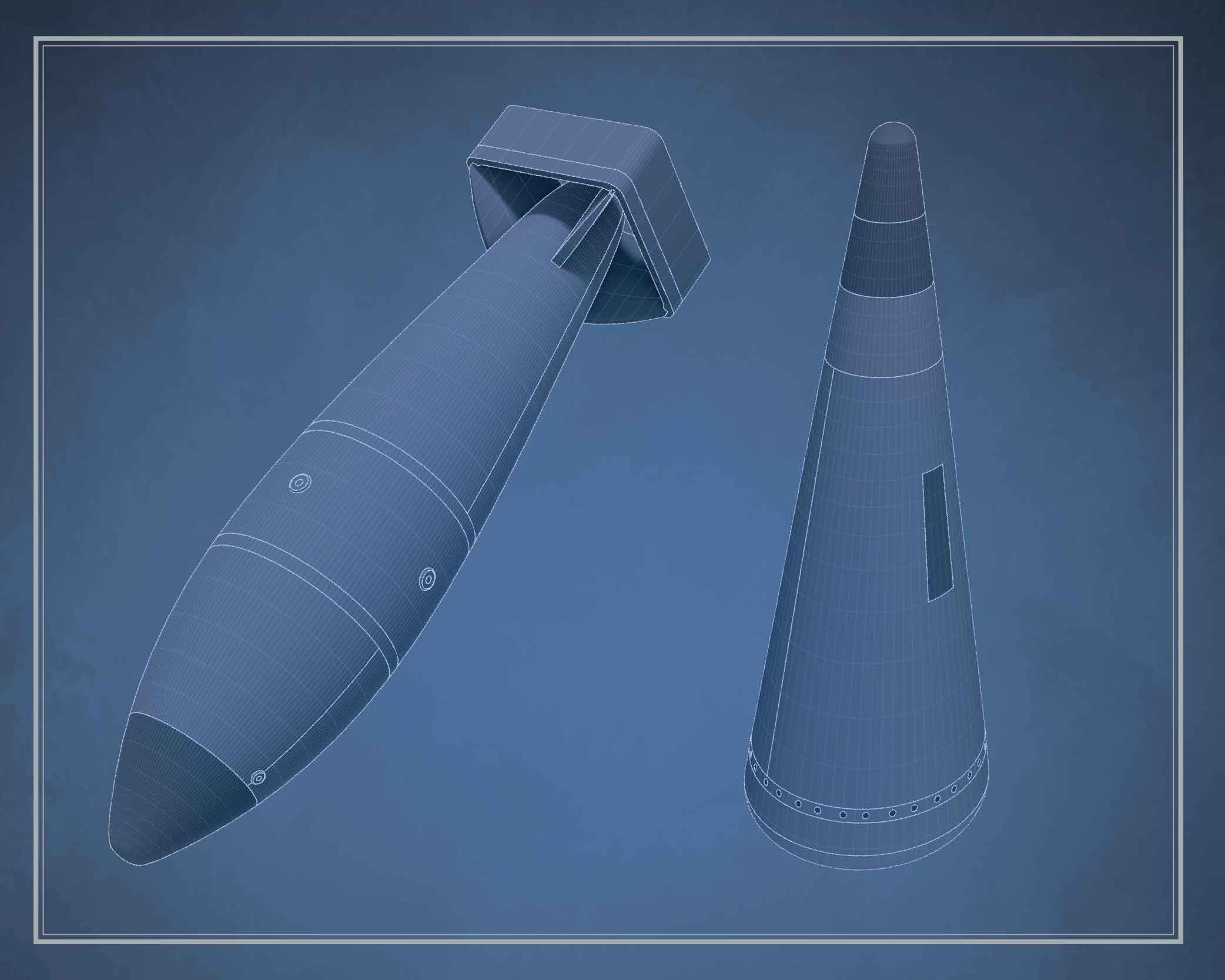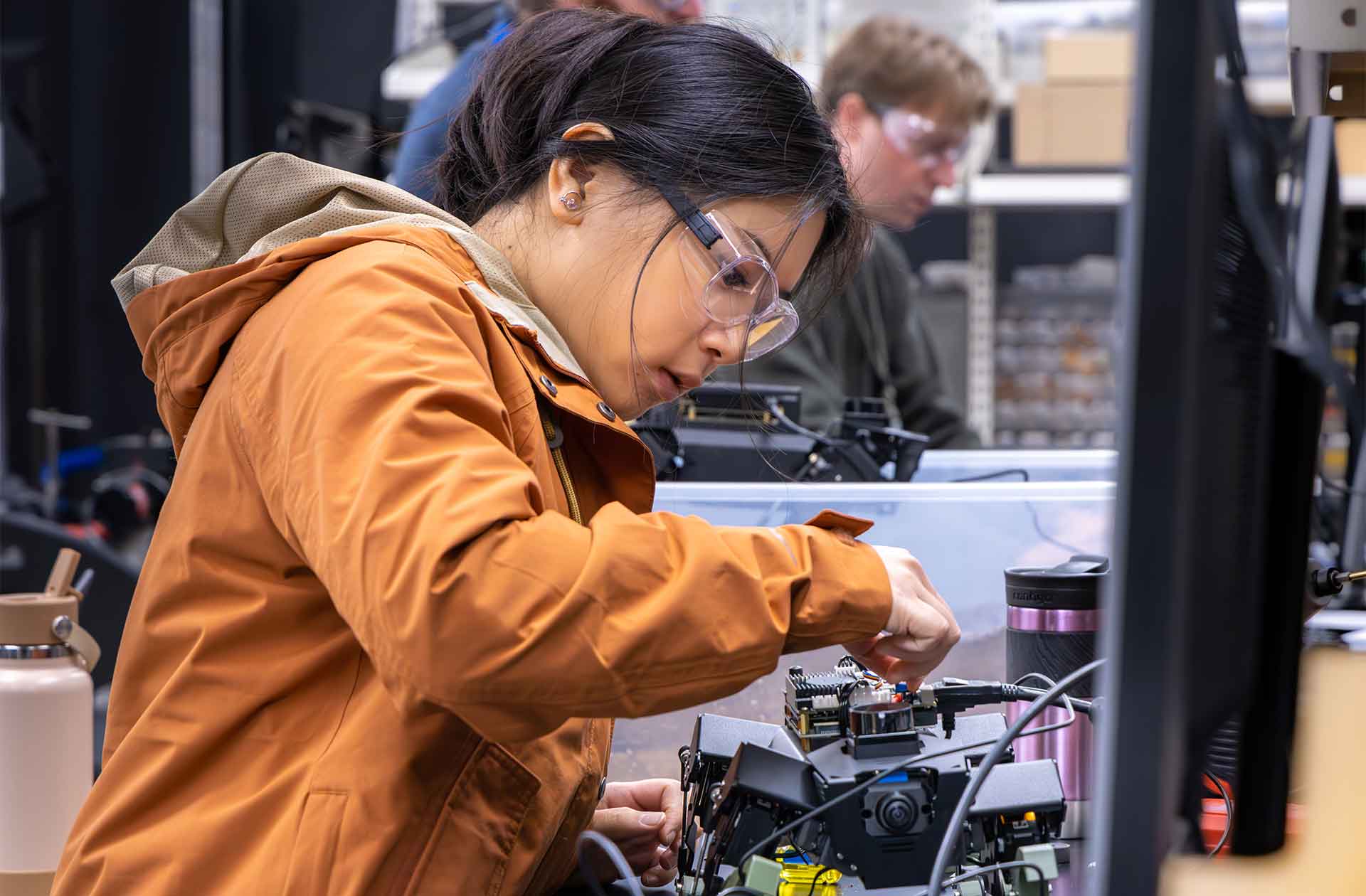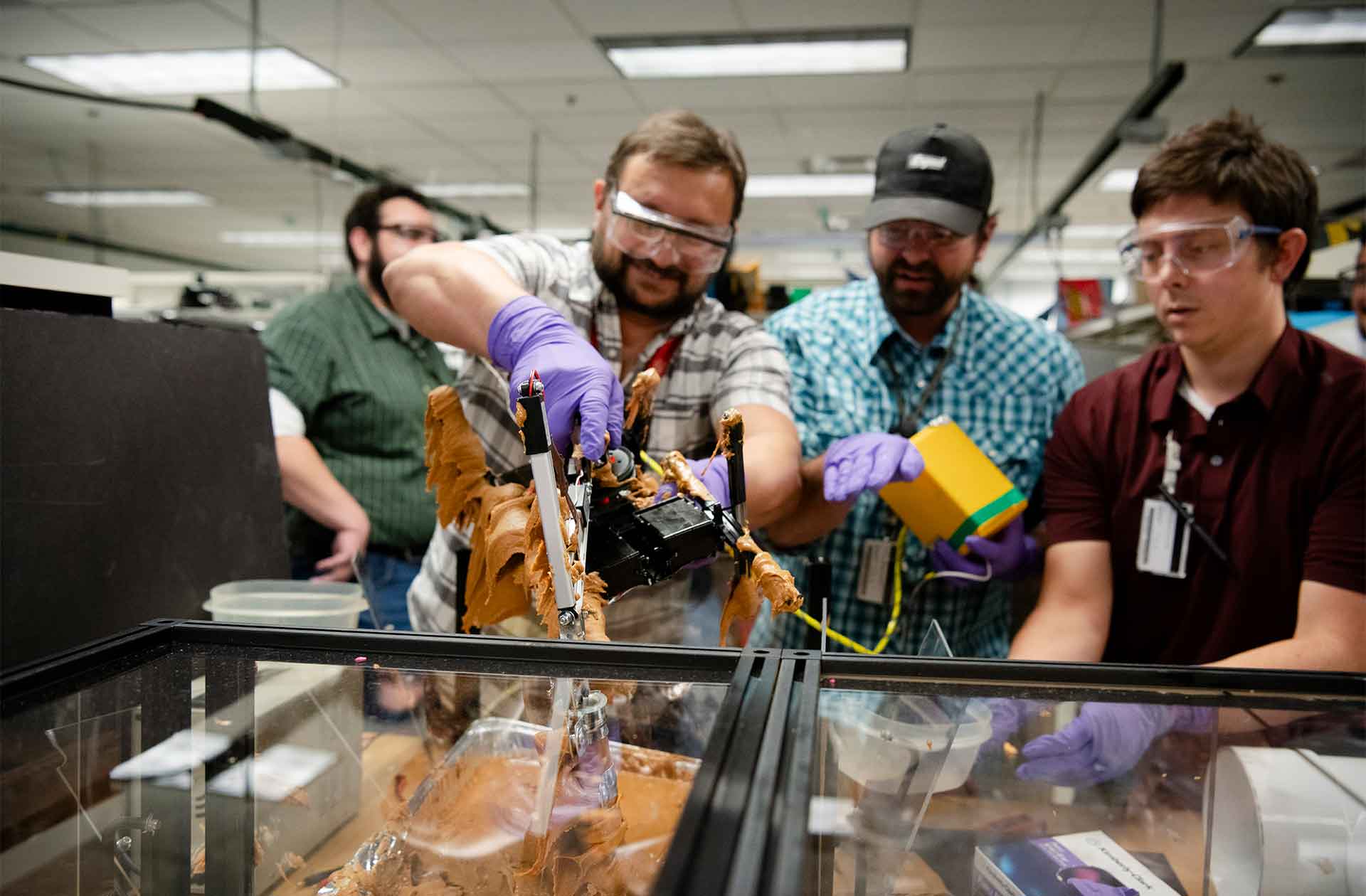Putting their best feet forward
Artwork documents a party’s notable guests.
- Jake Bartman, Communications specialist

One summer evening in the early 1950s, a group of Los Alamos locals gathered at the home of Harold and Beverly Agnew for cocktails. In addition to Harold Agnew—who later became director of Los Alamos Scientific Laboratory (now Los Alamos National Laboratory)—the guest list included Agnew’s mentor, Nobel laureate Enrico Fermi; physicist David Hall; and George Sawyer, principal of Los Alamos High School.
At some point during the party, and at Harold Agnew’s behest, the attendees coated their feet in colorful paint, then stepped onto a white-painted Masonite panel.
“My dad had prepared the board beforehand,” Harold’s daughter Nancy Chapman recalled to Los Alamos Historical Society curator Don Cavness. “The paint was applied to feet with a little hard rubber roller that my dad used for linoleum block prints that he made for Christmas cards.”
Although the exact year of the party isn’t known, it must have taken place between John Agnew’s birth in 1949 and Enrico Fermi’s death in 1954. John Agnew later donated the panel to the Los Alamos Historical Society. Today, the framed artwork can be seen inside the Hans Bethe House, which is part of the Los Alamos History Museum.
The following people put their best feet forward to create this piece of art:
Harold Agnew (1921–2013) was the only child of a Scotch-Irish stonecutter. A student of physicist Enrico Fermi, Agnew joined the Manhattan Project at Los Alamos in 1943 as a physicist. From 1970 to 1979, he served as Los Alamos Scientific Laboratory’s third director.
Beverly Jackson Agnew (1919–2011) arrived in Los Alamos with her husband, Harold, in 1943. During the Manhattan Project, she worked in J. Robert Oppenheimer’s office and was physicist Robert Bacher’s secretary. After the war, Agnew served on the New Mexico Board of Education. She was also a painter whose works were displayed in local galleries.
Nancy Chapman (nee Agnew, 1944–) is the daughter of Harold and Beverly Agnew. She graduated from Los Alamos High School in 1962.
John Agnew (1949–) is the son of Harold and Beverly Agnew. He graduated from Los Alamos High School in 1967.
Lewis Allbee was the principal of Los Alamos High School in 1950. By 1953, had been promoted to superintendent of Los Alamos Schools, a position he held until 1955.
Richard Crook (1903–1997) was a civil engineer who worked for the Zia Company, which for several decades managed both the Laboratory and the town of Los Alamos. He was president of the Los Alamos School Board in 1957.
Nella Fermi (1931–1995) was born in Italy to parents Enrico and Laura Fermi. She spent part of her childhood in Los Alamos during the Manhattan Project, and she later studied at the University of Iowa and the University of Chicago, where she earned a doctorate in organizational psychology.
Ethel Froman (1908–1978) was born in Canada but became a naturalized American citizen. She worked as a member of support staff at Los Alamos during the Manhattan Project, and she was the wife of Canadian physicist Darol Froman, who from 1951 to 1962 served as deputy director of Los Alamos Scientific Laboratory.
David Hall (1915–1998) was born in New Jersey and worked on the Manhattan Project at the University of Chicago’s Metropolitan Laboratory. He later worked at Los Alamos with his wife, Jane Hamilton Hall, on Clementine, the world’s first fast reactor, and went on to serve for 20 years as head of Los Alamos’ Reactor Division. Jane Hamilton Hall was best known as the Laboratory’s first female assistant director, having served in that role from 1955 to 1970.
Enrico Fermi (1901–1954) won the 1938 Nobel Prize in Physics. Fermi left his native Italy that same year to escape discriminatory laws that affected his wife, Laura, who was Jewish. From 1944 until the end of 1945, Fermi served as associate director of the Manhattan Project.
Viola “Vi” Roy was the wife of chemist Max Roy. In 1946, she was the librarian at Los Alamos’ Mesa Public Library, and served on the Los Alamos County Commission’s school budget board in 1949. In 1957, she became the first woman to serve on a Los Alamos jury.
George Sawyer (1922–2011) earned his Ph.D. at the University of Michigan and was a physicist at Los Alamos, where he authored a paper on heavy ion fusion. He also was involved with Los Alamos’ Little Theatre group. Sawyer was the son of physicist Ralph Sawyer. In 1946, Ralph Sawyer served as chief civilian scientist for Operation Crossroads, which comprised the United States’ second and third nuclear tests. ★
Special thanks to Los Alamos Historical Society (LAHS) curator Don Cavness, LAHS archives and collections technician Tina Moore, and LAHS archives and collections assistant Kaity Burke for their valuable contributions.
For more on David and Jane Hall, listen to:
